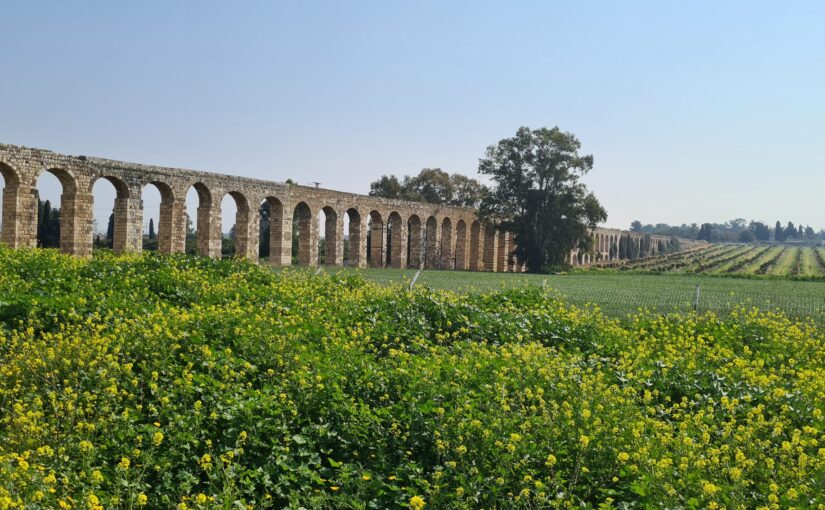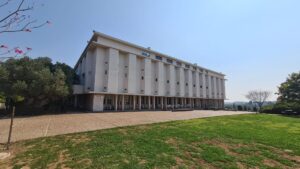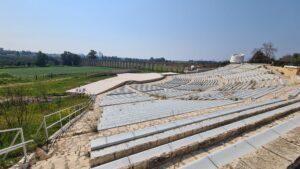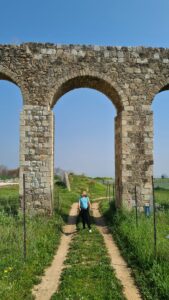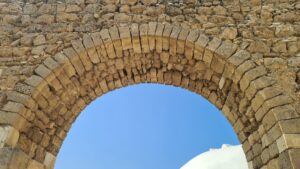Hi,
Atzva and I took off for a two-day vacation in the city of Acre. But first, we had to stop a bit north of the city, enjoy the food of Couronne Patisserie in Kibbutz Lohamei HaGeta’ot, and watch the longest and highest part of the Acre aqueduct.
The aqueduct used to run the water from 4 springs located around Kibbutz Kabri (around 13 km away from Acre): Shayara (convoy) spring (Ein Basha), Tzof (nectar) spring (Ein Asal), Gih (breakout) spring (Ein Al-Fuar) and Shefa (profusion) spring (Ein Mafshuh).
This aqueduct is the last of three aqueducts: the first is from the Hellenistic era in the land of Israel (332 BC till 63 BC). It was mainly underground and was partly revealed around 1975 near Kibbutz Lohamei HaGeta’ot and in 1972 and 1977 near the settlement Nes Ammim. It includes a 90-cm wide and a 1.80-high tunnel.
The second aqueduct was built by the Ottoman ruler Jazzar Pasha, at the end of the 19th century. It was made of clay pipe and led the water from Shayara (convoy) spring to Acre. It was ruined by Napoleon Bonaparte during the siege on Acre in 1799. There are almost no remains left of it, and the main source of knowledge comes from the maps of Pierre Jacotin.
The third and last aqueduct of Acre, and the one visited it remains, is the aqueduct of Sulayman Pasha. It was built in 1814-1815 and supplied water to Acre till 1948 when it was blown by HaHagana at the beginning of the War of Independence on Operation Ben Ami (like the aqueduct to Jerusalem that supplied water for thousands of years was blown during the Six Day war). Several attempts were made to make it operational but stopped due to repeating leaks.
The aqueduct was built as an open tunnel (35×35cm) made of clay or stone and was covered with stone plates. In the 3 locations, where it crossed streams over bridges (Ga’aton, Beit HaEmek, and Yesaf), it was kept open.
About 2 km North-East of Acre and up to the city walls the aqueduct is made of clay pipes. Along this segment, several siphon towers preserved the pressure and helped to keep the water clean. 4 towers are still standing along the route, and a fifth one is on the walls of the city.
The patisseries were great, I never ate a Briush so packed with crème pâtissière. You can eat inside or on wooden benches outside. But for such a sunny day you can go ahead and borrow one of the mats and lie down on the grass, as we did.
We spent the night in Arabesque hotel in the old city of Acre. A new hotel in ancient beautiful stone buildings.
Take Care
Gad
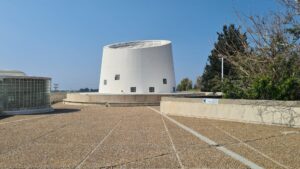 The Yad LaYeled Children’s Museum
The Yad LaYeled Children’s Museum
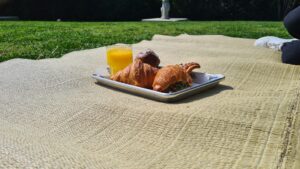 Eating patisseries on the grass
Eating patisseries on the grass
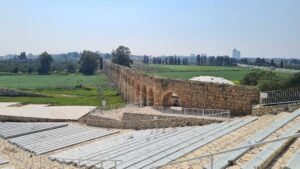 The museum open theater and Acre aqueduct
The museum open theater and Acre aqueduct
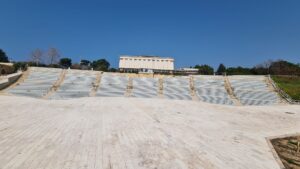 The museum and the open theater from the stage
The museum and the open theater from the stage
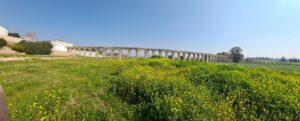 The 12 m high part of the aqueduct over Yesaf stream
The 12 m high part of the aqueduct over Yesaf stream
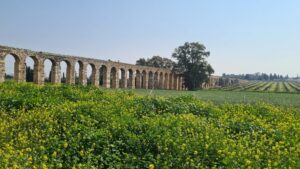 Behind the tree the aqueduct has two levels of arches
Behind the tree the aqueduct has two levels of arches
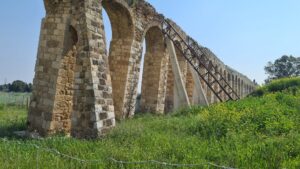 Horizontal supports for the structure
Horizontal supports for the structure
Acre aqueduct route and site map
A 4K video of the aqueduct

